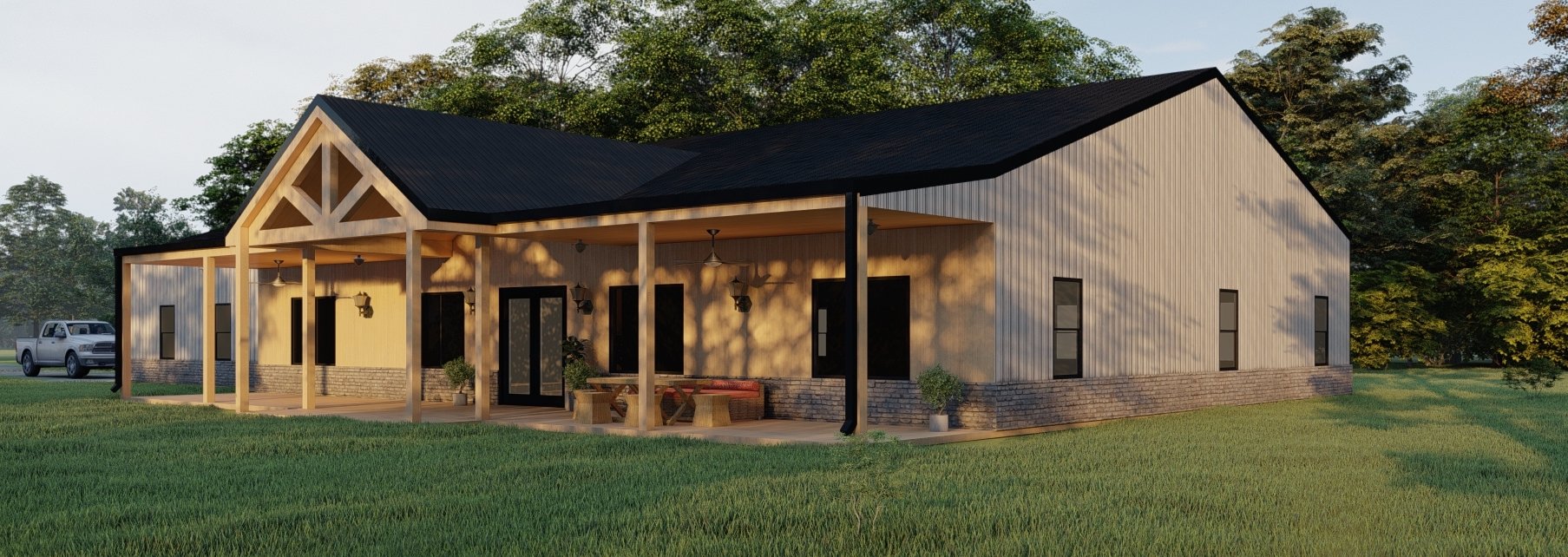Comprehensive Barndominium Repair: Fixing Structural and Visual Concerns
Comprehensive Barndominium Repair: Fixing Structural and Visual Concerns
Blog Article
Barndominiums Vs. Standard Houses: a Thorough Comparison of Way Of Living and Performance
The decision in between barndominiums and traditional homes incorporates different variables, consisting of way of life choices and useful needs. Barndominiums are defined by their open designs and adaptability, commonly appealing to those that focus on communal living and convenience.
Overview of Barndominiums
Barndominiums, a novel housing fad gaining appeal throughout different regions, blend the rustic charm of barn-style design with the performance of contemporary home. These one-of-a-kind frameworks typically include a steel or timber structure, integrating open floor plans and high ceilings with energy-efficient features. Typically located on expansive rural residential properties, barndominiums use house owners the chance to delight in a calm way of living while supplying adequate area for various tasks.
The convenience of barndominiums prolongs beyond their visual allure; they can act as both living quarters and functional spaces for hobbies, workshops, or perhaps small companies. Their adaptive layout enables for easy modification, fitting diverse family members needs and choices. Lots of owners value the low upkeep demands related to steel exterior siding and roofing, adding to long-term durability.

Attributes of Typical Homes
Highlighting ageless layout and convenience, traditional homes are characterized by their unique building designs, which usually reflect historical influences and regional looks. Usual attributes consist of symmetrical facades, gabled roofing systems, and an emphasis on craftsmanship, leading to a warm and inviting environment.
Standard homes commonly include components such as crown molding, wainscoting, and wood floor covering, boosting their timeless charm. They commonly include numerous spaces with defined functions, promoting family interaction while allowing for privacy. visit site. The design commonly consists of official living and eating areas, which contribute to amusing visitors and organizing family members celebrations
Outside products such as block, wood, or stone are frequently used, contributing to resilience and a sense of permanence. Barndominium builder. In addition, numerous conventional homes are developed with front patios or stoops, fostering a sense of community and link with the community
Landscaping plays a considerable role in traditional home layout, with properly maintained yards and pathways that enhance aesthetic allure - visit website. In general, conventional homes embody a sense of nostalgia and security, interesting those that value heritage and a much more structured living environment
Price Contrast
Commonly, a price contrast between barndominiums and traditional homes discloses substantial distinctions in building expenses and total financial investment. Barndominiums, typically constructed from steel or steel structures, usually incur reduced product and labor costs than typical homes constructed from wood and block. The streamlined design of barndominiums can convert to minimized building times, further lowering labor expenses and expediting tenancy.
On average, the price per square foot for a barndominium varies from $100 to $150, while standard homes can vary extensively, usually falling in between $150 and $300 per square foot, depending on area, materials, and layout complexity. This price disparity makes barndominiums an eye-catching choice for budget-conscious customers seeking bigger home without giving up quality.
In addition, barndominiums may cause long-term financial savings find more through reduced upkeep costs, energy performance, and insurance policy rates. Their sturdy building products frequently need much less upkeep gradually contrasted to conventional homes. It is necessary to take into consideration that while initial costs may be lower for barndominiums, the last financial investment will certainly also depend on private personalization and preferred services, which can affect the overall expense in both housing types.
Way Of Life and Area Factors To Consider
When taking into consideration way of living and room, barndominiums supply an unique flexibility that interest a range of house owners. These hybrid frameworks integrate property dealing with practical area, commonly including open flooring plans that can be adapted to suit individual needs. This adaptability is especially helpful for households or individuals seeking a personalized living environment, permitting varied usages such as home workplaces, workshops, or leisure areas.

Additionally, the visual charm of barndominiums can satisfy both rustic and contemporary preferences, making them a versatile selection for various layout preferences (Barndominium repair). Inevitably, the option in between a barndominium and a conventional home usually hinges on just how well each option lines up with the homeowner's way of life desires and spatial demands, highlighting the relevance of considering individual top priorities in the decision-making process
Environmental Influence and Sustainability
The environmental effect and sustainability of barndominiums present engaging benefits compared to conventional homes. Largely constructed from steel and other long lasting products, barndominiums are frequently developed making use of recycled sources, reducing the demand for brand-new products and decreasing waste. Their design usually stresses open areas, which can bring about lower energy consumption for cooling and heating contrasted to typical homes with even more segmented layouts.
Furthermore, barndominiums can integrate sustainable functions such as photovoltaic panels, rain harvesting systems, and progressed insulation strategies, boosting their power effectiveness. The convenience of their layout permits home owners to incorporate these technologies more seamlessly than in many traditional homes, which may require extensive retrofitting.
Additionally, barndominiums frequently require less sources for building and construction as a result of their easier, a lot more effective styles. This not just reduces the carbon impact related to structure but likewise adds to a more sustainable way of living. In contrast, standard homes may involve greater degrees of energy expenditure and resource use throughout their lifecycle, from construction to maintenance. Generally, barndominiums stand for a forward-thinking technique to sustainable living, aligning with modern environmental priorities.
Final Thought
In recap, the choice between barndominiums and typical homes hinges on specific lifestyle choices and practical requirements. Barndominiums, with their open designs and lasting materials, provide to those looking for flexibility and common living.
Report this page